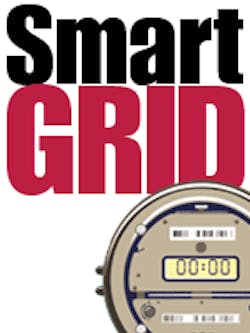When it comes to the Smart Grid, the popular media portrays the smart meter as the locus of a battle between besieged consumers and rapacious energy utilities. This is understandable in light of the inept handling of glitches in the rollouts of millions of smart meters in various communities (see “Smart-Meter Rollouts And Standards Stir Controversy”). But it’s not helpful in thinking about the design opportunities that the Smart Grid offers.
For example, Accent’s ASMgrid system-on-a-chip (SoC) platform enables the company to custom design SoCs, not just for measuring electricity consumption anywhere in the world, but also for home appliances and appliance controllers that talk to smart meters and utility concentrators in two-way communications with smart meters, using any physical layers (PHYs) and media access controller (MAC) layers that have been programmed or adopted for that use. The platform includes data measurement and collection as well as much of the software below the application layer.
BEYOND COUNTING KILOWATTS
The Smart Grid’s basic mission is to moderate the current wide swings in hourly energy demand through dynamic energy pricing. Pike Research sees opportunities for energy management devices connected to home-area networks (HANs). The energy-market analyst firm notes that the American Recovery and Reinvestment Act (ARRA) Smart Grid Investment Grants include funds for significant deployments of in-home displays and overall HAN pilots. In fact, ARRA budgeted $787 billion for these grants.
Devices that connect to the HAN include in-home displays of real-time information on the current cost of energy and the amount and cost of energy consumed so far in the current billing cycle; energy management systems that can take that downstream information and decide, based on user input, when to run appliances; programmable communicating thermostats that do the same sort of thing for environmental-control systems; and similar gadgets for pool or spa pumps, water heaters, dishwashers, and other energy hogs.
On the other side of the meter from the consumer, the utility has its neighborhood-area networks (NANs). The preferred communications mode for NANs depends on the average number of customers serviced by the final step-down transformers in the electricity distribution system. In Europe, where there is a large number of drops for each transformer, powerline communications (PLC) dominates. In suburbs-dominated North America, the preferred mode is 900-MHz wireless, generally implemented as a mesh rather than a star topology.
PLC is a frequency-shift keying (FSK) mode with a carrier below 500 kHz, widely spaced mark and space frequencies, and low (about 100 kbits/s) data rates. But according to Accent CEO Federico Arcelli, even though Europe is said to have the widest deployment of smart meters per capita of any region worldwide, virtually all of those meters are in Italy. How the rest of Europe will go is still an open question.
Regardless of how data travels between the consumer’s smart meter and the concentrator at the other end of the NAN, the communications network connecting the various concentrators to the utility’s head-end systems is a conventional wide-area network (WAN), which is often a public wired or wireless cellular system, although it could use broadband over powerline (BPL) or dedicated fiber. According to Pike Research, 4G technologies including WiMAX are also being considered for NAN applications as equipment costs drop.
The contention for the most popular mode in the HAN is shaping up to be a love-fest. Pike Research notes that ZigBee, with its well integrated set of standards above the IEEE 802.15.4 MAC and PHY levels and its self-configuration and self-healing capabilities, is one alternative. ZigBee already defines application profiles that specify device types and messages for applications such as lighting and environmental controls. Expressly for the Smart Grid, the ZigBee Alliance has defined a Smart Energy Profile that further defines messages and behaviors.
Alternatively, HomePlug provides PHY and MAC layers using orthogonal frequency-division multiplexing (OFDM) over power wiring in the house (with an Ethernet interface to appliances and controllers). Data rates are as high as 189 Mbits/s (the “AV” release) and 600 Mbits/s (AV2, when it becomes available). As the “AV” implies, those data rates are intended for home entertainment systems and are serious overkill for appliance control. The HomePlug Alliance has also defined an extension (retraction?) of the HomePlug AV version, called HomePlug GP (for “Green PHY”), that aims to reduce cost and power requirements by reducing data rates to about 1 Mbit/s. Meanwhile, a revised version (2.0) of the ZigBee Smart Energy profile that will allow use with other protocols including HomePlug is in the works.
About the Author

Don Tuite
Don Tuite (retired) writes about Analog and Power issues for Electronic Design’s magazine and website. He has a BSEE and an M.S in Technical Communication, and has worked for companies in aerospace, broadcasting, test equipment, semiconductors, publishing, and media relations, focusing on developing insights that link technology, business, and communications. Don is also a ham radio operator (NR7X), private pilot, and motorcycle rider, and he’s not half bad on the 5-string banjo.
